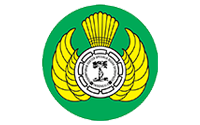The Effect of Culture Techniques of Hypoxic Stem Cell Secretome on The Number of Growth Factor TGF-β, BMP-2, VEGF
Downloads
Background: Mesenchymal stem/stromal cell (MSC) therapy is now an effective therapeutic modality for treating various diseases. In its application, stem cells require signaling molecules, including growth factors, cytokines, and chemokines. Signaling molecules function in an orderly manner and are greatly influenced by the physiological environment. Stem cell culture techniques with hypoxic conditions can produce growth factors similar to those found in fracture conditions. This study aimed to evaluate the differential expression of growth factors in cultured normoxic and hypoxic bone marrow stem cell (BMSCs).
Methods: This in vitro laboratory experimental study examined normoxic and hypoxic BMSC cultures. BMSCs were harvested from rabbits, propagated in vitro, and cultured under normoxic and hypoxic conditions. Vascular endothelial growth factor (VEGF), Transforming growth factor-β (TGF-β), and Bone morphogenetic protein-2(BMP-2) levels were measured using ELISA.
Results: VEGF, TGF-β, and BMP-2 expression showed significant differences between the normoxia and hypoxia groups. The VEGF, TGF-β, and BMP-2 expressions were higher in the hypoxia group compared with the normoxia group (p < 0.05).
Conclusion: The expression of TGF-β1, VEGF, and BMP-2 growth factors in cultured BMSCs was significantly different between normoxic and hypoxic conditions. TGF-β1, VEGF, and BMP-2 expression increased under hypoxic conditions.
Murphy MB, Moncivais K, Caplan AI. Mesenchymal stem cells: environmentally responsive therapeutics for regenerative medicine. Exp Mol Med 2013;45(11):e54.
Fierabracci A, Del Fattore A, Muraca M. The immunoregulatory activity of mesenchymal stem cells: ‘State of art’ and 'future avenues.' Curr Med Chem 2016;23(27):3014–24.
Amini AR, Laurencin CT, Nukavarapu SP. Bone tissue engineering: recent advances and challenges. Crit Rev Biomed Eng 2012;40(5):363-408.
Hasan A, Byambaa B, Morshed M, Cheikh MI, Shakoor RA, Mustafy T, et al. Advances in osteobiologic materials for bone substitutes. J Tissue Eng Regen Med 2018; 12(6):1448-68.
O’Keefe RJ, Jacobs JJ, Chu CR, Einhorn TA. Orthopaedic basic science: Foundations of clinical practice, fourth edition. Wolters Kluwer Health, 2018. p. 371.
Augat P, Hollensteiner M, von Rüden C. The role of mechanical stimulation in the enhancement of bone healing. Injury 2021;52:S78-S83.
Glatt V, Evans CH, Tetsworth K. A concert between biology and biomechanics: the influence of the mechanical environment on bone healing. Front Physio 2017;24(7):678.
Owen M and Friedenstein AJ. Stromal stem cells: marrow-derived osteogenic precursors. Ciba Found Symp. 1988;136:42-60.
Gnecchi M, He HM, Liang OD, Melo LG, Morello F, Mu H, et al. Paracrine action accounts for marked protection of ischemic heart by AKT-modified mesenchymal stem cells. Nat Med 2005;11:367–8.
Bari E, Scocozza F, Perteghella S, Sorlini M, Auricchio F, Torre ML, et al. 3D bioprinted scaffolds containing mesenchymal stem/stromal lyosecretome: Next generation controlled release device for bone regenerative medicine. Pharmaceutics 2021;13(4):515.
Dewing D, Emmett M, Pritchard JR. The roles of angiogenesis in malignant melanoma: trends in basic science research over the last 100 years. ISRN Oncol 2012:2012:546927.
Ramakrishnan S, Anand V, Roy S. Vascular endothelial growth factor signaling in hypoxia and inflammation. J Neuroimmune Pharmacol 2014 Mar;9(2):142-60.
Yin HL, Luo CW, Dai ZK, Shaw KP, Chai CY, Wu CC. Hypoxia-inducible factor-1α, vascular endothelial growth factor, inducible nitric oxide synthase, and endothelin-1 expression correlates with angiogenesis in congenital heart disease. Kaohsiung J Med Sci 2016;32(7):348-55.
Lin SK, Shun CT, Kok SH, Wang CC, Hsiao TY, Liu CM. Hypoxia-stimulated vascular endothelial growth factor production in human nasal polyp fibroblasts: Effect of epigallocatechin-3-gallate on hypoxia-inducible factor-1α synthesis. Arch Otolaryngol Head Neck Surg 2008;134(5):522-7.
Xu X, Zheng L, Yuan Q, Zhen G, Crane JL, Zhou X, et al. Transforming growth factor-β in stem cells and tissue homeostasis. Bone Res 2018;6(1):2.
Toosi S and Behravan J. Osteogenesis and bone remodeling: A focus on growth factors and bioactive peptides. BioFactors 2020;46(3):326-40.
Gu H, Huang T, Shen Y, Liu Y, Zhou F, Jin Y, et al. Reactive oxygen species-mediated tumor microenvironment transformation: the mechanism of radioresistant gastric cancer. Oxid Med Cell Longev 2018; 2018:1-8.
Mingyuan X, Qianqian P, Shengquan X, Chenyi Y, Rui L, Yichen S, et al. Hypoxia-inducible factor-1α activates transforming growth factor-β1/Smad signaling and increases collagen deposition in dermal fibroblasts. Oncotarget 2017;9(3):3188-97.
Rantam FA, Ferdiansyah, Nasronudin. Stem cell exploration methods of isolation and culture. Airlangga University Press, Surabaya; 2009.
Demoor M, Ollitrault D, Gomez-Leduc T, Bouyoucef M, Hervieu M, Fabre H, et al. Cartilage tissue engineering: molecular control of chondrocyte differentiation for proper cartilage matrix reconstruction. Biochim Biophys Acta Gen Subj 2014;1840(8):2414-40.
Tseng WP, Yang SN, Lai CH, Tang CH. Hypoxia induces BMP-2 expression via ILK, Akt, mTOR, and HIF-1 pathways in osteoblasts. J Cell Physiol 2010;223(3):810-8.
Lafont JE, Poujade FA, Pasdeloup M, Neyret P, Mallein-Gerin F. Hypoxia potentiates the BMP-2 driven COL2A1 stimulation in human articular chondrocytes via p38 MAPK. Osteoarthr Cartil 2016;24(5):856-67.
Copyright (c) 2022 Journal Orthopaedi and Traumatology Surabaya (JOINTS)

This work is licensed under a Creative Commons Attribution-NonCommercial-ShareAlike 4.0 International License.
- The author acknowledges that the copyright of the article is transferred to the Journal of Orthopaedi and Traumatology Surabaya (JOINTS), whilst the author retains the moral right to the publication.
- The legal formal aspect of journal publication accessibility refers to Creative Commons Attribution-Non Commercial-Share Alike 4.0 International License (CC BY-NC-SA).
- All published manuscripts, whether in print or electronic form, are open access for educational, research, library purposes, and non-commercial uses. In addition to the aims mentioned above, the editorial board is not liable for any potential violations of copyright laws.
- The form to submit the manuscript's authenticity and copyright statement can be downloaded here.
Journal of Orthopaedi and Traumatology Surabaya (JOINTS) is licensed under a Creative Commons Attribution-Non Commercial-Share Alike 4.0 International License.



























 Journal Orthopaedi and Traumatology Surabaya (JOINTS) (
Journal Orthopaedi and Traumatology Surabaya (JOINTS) (